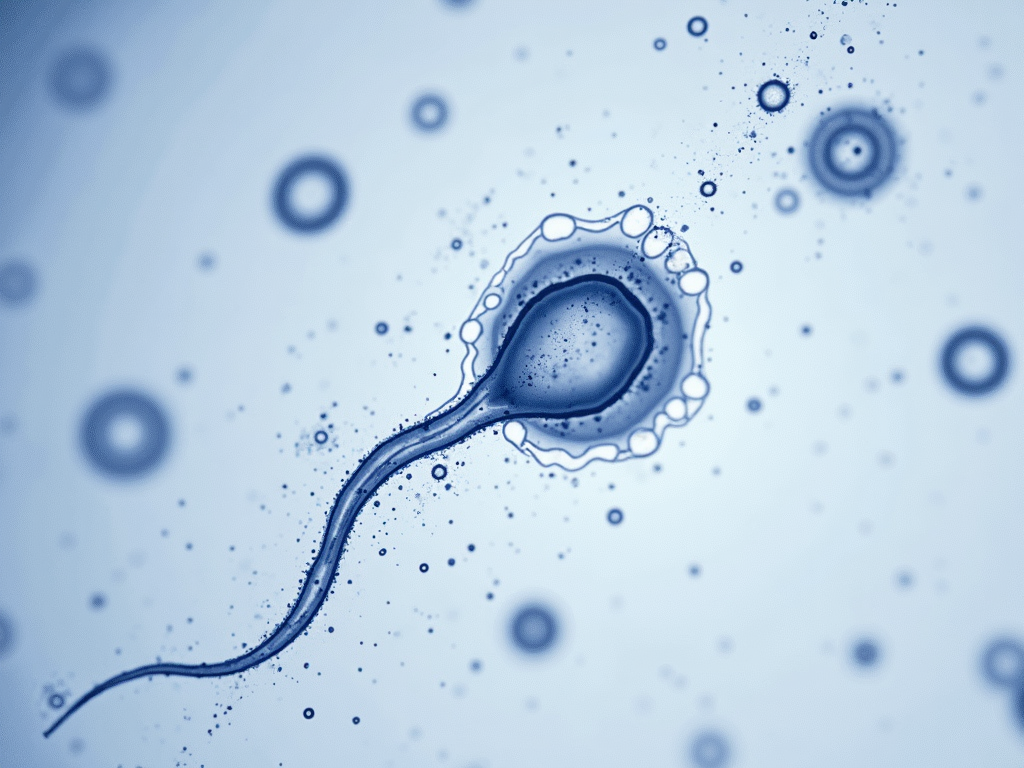Understanding Azoospermia: Causes and Treatment Options
March 24, 2025, 12:13 p.m.
Azoospermia is a condition that affects male fertility, characterized by the absence of sperm in the semen. Understanding its causes and treatment options is crucial for couples trying to conceive. This article provides an in-depth look at azoospermia, including its types, diagnosis, and the latest treatment methods, along with insights into the emotional support needed during this journey.
What is Azoospermia?
Azoospermia is a medical condition where a man's semen contains no sperm. It is a significant cause of male infertility, affecting about 1% of the male population and 10-15% of infertile men. There are two main types of azoospermia: obstructive and non-obstructive.
- Obstructive Azoospermia: This occurs when there is a blockage in the reproductive tract, preventing sperm from being ejaculated. The testicles produce sperm normally, but it cannot reach the semen due to obstructions.
- Non-Obstructive Azoospermia: In this type, the testicles do not produce enough sperm, or none at all, due to various reasons such as hormonal imbalances, genetic disorders, or damage to the testicles.
Understanding the type of azoospermia is essential for determining the appropriate treatment.

Causes of Azoospermia
The causes of azoospermia can be diverse and may include:
- Genetic Factors: Conditions like Klinefelter syndrome or Y chromosome microdeletions can lead to non-obstructive azoospermia.
- Hormonal Imbalances: Low levels of hormones like testosterone can affect sperm production.
- Infections: Sexually transmitted infections or other infections can cause blockages or damage to the reproductive system.
- Varicocele: Enlarged veins in the scrotum can affect sperm production.
- Medications and Treatments: Certain medications, chemotherapy, or radiation therapy can impair sperm production.
- Lifestyle Factors: Smoking, excessive alcohol consumption, and drug use can contribute to azoospermia.

Diagnosis of Azoospermia
Diagnosing azoospermia typically involves:
- Semen Analysis: A laboratory test to check for the presence of sperm in the semen. If no sperm is found in two separate samples, azoospermia is confirmed.
- Physical Examination: To check for any abnormalities in the reproductive organs.
- Hormone Testing: Blood tests to measure hormone levels that affect sperm production.
- Genetic Testing: To identify any genetic causes of azoospermia.
- Imaging Tests: Ultrasound or MRI to detect blockages or other structural issues.

Treatment Options for Azoospermia
Treatment depends on the type and cause of azoospermia:
- Surgical Treatments:
- Microsurgical Reconstruction: For obstructive azoospermia, surgery can remove blockages and restore the flow of sperm.
-
Varicocele Repair: Surgery to correct varicocele can improve sperm production.
-
Non-Surgical Treatments:
- Hormone Therapy: Medications to correct hormonal imbalances.
- Assisted Reproductive Techniques (ART): Methods like in vitro fertilization (IVF) combined with sperm retrieval techniques.
Sperm Retrieval Techniques
In cases where natural conception is not possible, sperm retrieval techniques can be used to obtain sperm for ART:
- Testicular Sperm Extraction (TESE): A surgical procedure to extract sperm directly from the testicles.
- Micro-TESE: A more precise version of TESE using a microscope to identify areas with sperm.
- Percutaneous Epididymal Sperm Aspiration (PESA): A needle is used to aspirate sperm from the epididymis.
- Testicular Sperm Aspiration (TESA): Similar to PESA but from the testicles.
These techniques have varying success rates depending on the individual case.

Emotional Support for Couples Facing Infertility Challenges
Dealing with azoospermia and infertility can be emotionally taxing for couples. It's important to:
- Seek Counseling: Professional counseling can help couples cope with the stress and emotional burden.
- Join Support Groups: Connecting with others facing similar challenges can provide comfort and understanding.
- Communicate Openly: Maintaining open communication between partners is crucial.
- Consider Alternative Paths: Exploring options like adoption or donor sperm can be part of the journey.
As someone who has witnessed friends struggle with infertility, I understand the emotional rollercoaster it can be. The journey is often filled with hope, disappointment, and resilience. It's important to remember that seeking help is a sign of strength, not weakness. Couples should lean on each other and their support networks during this time.

Summary
Azoospermia is a complex condition that requires a thorough understanding of its causes and treatment options. From diagnosis to treatment, including sperm retrieval techniques, there are various paths to explore. Equally important is the emotional support for couples navigating this challenging journey. By seeking professional help and leaning on support systems, couples can find hope and possibilities.